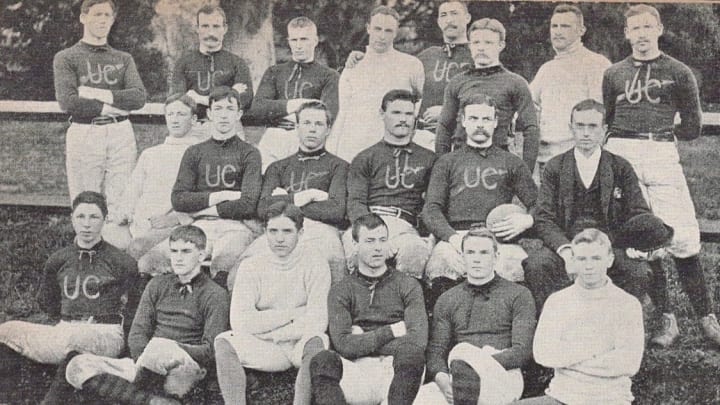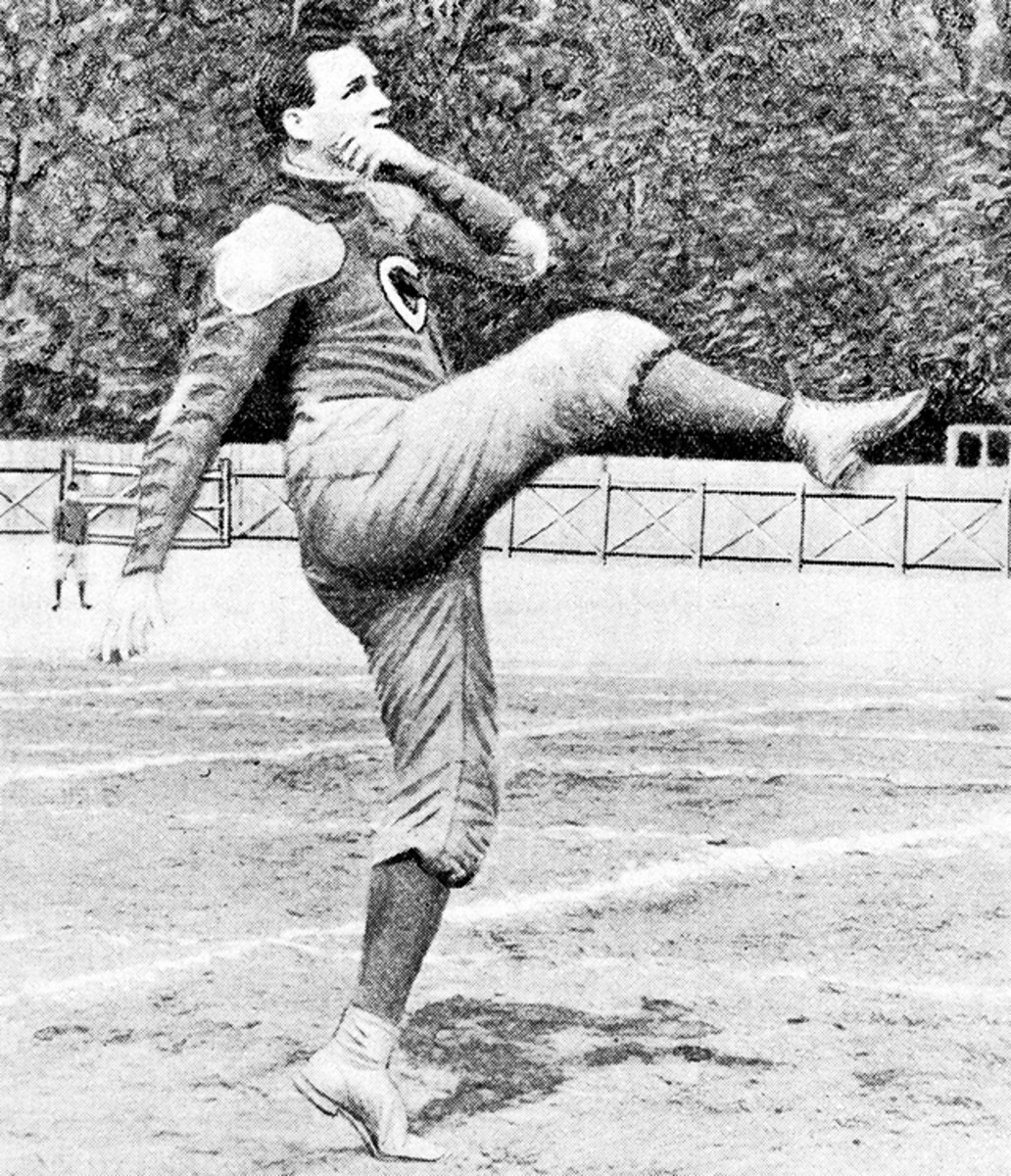The Best of the Bears: Unveiling Cal's Athletes of the Year for the Past Century

Way back in 1882, California had a population smaller than Maine, and the U.S. flag had only 38 stars. On Dec. 2 of that year, Cal played its first football game.
The Bears lost, falling 7-4 to the Phoenix Club of San Francisco, but it was just the beginning of an athletic legacy that now has spanned nearly 138 years.
The first Big Game was played 10 years later. Four years after that, Cal was part of the first women’s college basketball game ever played, although it was another 78 years before the women stepped foot again on the hardwood.
With sports — and much of our world — still shut down because of the COVID-19 pandemic, we decided the time was right to scroll back through Cal’s history and put a spotlight on the Best of the Bears.
We have put together an 11-part series that will identify Cal’s Athlete of the Year for each academic year of the past century. It starts with the 1920s and we'll unveil 10 years at a time, all the way to the present day.
While sports at Cal were elevated to a different level beginning in the ‘20s, there certainly were Golden Bears in the nearly four decades before that who deserve notice.
For instance, who was the best player on the 1892 football team that faced off against Stanford on March 19 in front of 15,000 eager fans on the field located at Haight and Stanyan in San Francisco?
Clinton “Brick” Morse, who played on the ‘92 team and was attached at the hip to the program for half a century, offered his up-close opinion in his 1937 book, “California Football History.”
“Loren Hunt, greatest of the Blue and Gold team and one of the greatest players that ever won a moleskin,” Morse wrote. Hunt is found in the photo above in the middle row, third from the right. Morse is standing on the far right end of the top row.
Nicknamed the "Eternal Sophomore," Morse is recognized as Cal’s first three-sport letterman, having also played baseball and run track and field. But those are merely his opening credentials.
He helped form the Cal Glee Club and later served as director. He composed two enduring fight songs, “Sons of California” and “Hail to California.” He is credited with founding the Big C Society and he wrote for the San Francisco Call newspaper.
Here are five of early-day Cal sports dignitaries whose exploits Morse no doubt chronicled:
— PERCY HALL (football & baseball). Hall teamed up with Warren “Locomotive” Smith and Lawrence “Kangaroo Pete” Kaarsberg to form one of the nation’s top backfields in the late 1890s. (What happened to those fantastic nicknames of yesteryear?) Morse rated it as the greatest backfield in Cal history (through 1937). He was captain of the 1898 squad that was 8-0-2 and was the first in school history to beat Stanford, reportedly gaining 183 yards and scoring two touchdowns in the Bears’ 22-0 victory. Hall also played outfield and first base on the Cal baseball team.
— WARREN “LOCOMOTIVE” SMITH (football, baseball, track & field). The three-sport standout from 1898 through 1900 was part of Cal’s first two Big Game victories and later was chosen as second-team halfback on Brick Morse’s 1937 all-time Cal team. He was a catcher for the Cal baseball team and scored points in the hammer throw in the 1899 Big Meet against Stanford.

— ORVAL OVERALL (football & baseball). Cal’s first great athlete of the 20th century, Overall lettered in baseball during the early 1900's before assembling a sparkling major league career as a pitcher. He played nine seasons with the Chicago Cubs and pitched in four World Series games with a 3-1 record and a 1.58 World Series earned run average. In 1907, he was 23-7 with a 1.70 ERA and two years later he was 21-11 with a 1.42 ERA. Overall was a four-year starter at guard on the Cal football team and played major roles in three Big Games: He blocked a kick for a safety in a 2-0 victory in 1901, kicked two field goals in a 16-0 win in '02 and kicked the Bears into a 6-6 tie in ’03.
— HARRY LIVERSEDGE (rugby, football, track & field). A versatile athlete who was a starter on the 1914 Cal rugby team then was a backup guard in 1916 when the Bears returned to football. He made his biggest splash in track and field, setting a collegiate record in the shot put, then winning a bronze medal in the event at the 1920 Antwerp Olympics. As a U.S. Marine, Liversedge helped lead troops ashore at Iwo Jima in 1944 after receiving a Navy Cross for his efforts in the Solomon Islands a year earlier. Ultimately, he rose to the rank of brigadier general.
— WALTER GORDON (football/boxing/wrestling). Gordon was a guard and tackle on coach Andy Smith’s first three teams and Cal’s first football player to earn national recognition when he was named to Walter Camp’s 1918 All-America third team for the Bears’ Pacific Coast Conference championship team. But he was far more than that. The grandson of a slave, Gordon became the second African American to earn All-America honors (after Paul Robeson). He won state collegiate boxing and wrestling titles while at Cal. He was the first African American to receive a law degree from Cal and went on to an impressive career that included stints as a lawyer, police officer, assistant football coach at Cal and governor of the U.S. Virgin Islands. Gordon was voted into the National Football Foundation College Hall of Fame in 1975.
NEXT UP: In our second installment, we reveal the Best of the Bears for the decade of the 1920s.
Follow Jeff Faraudo of Cal Sports Report on Twitter: @JeffFaraudo
Click the "follow" button in the top right corner to join the conversation on Cal Sports Report on SI. Access and comment on featured stories and start your own conversations and post external links on our community page.
